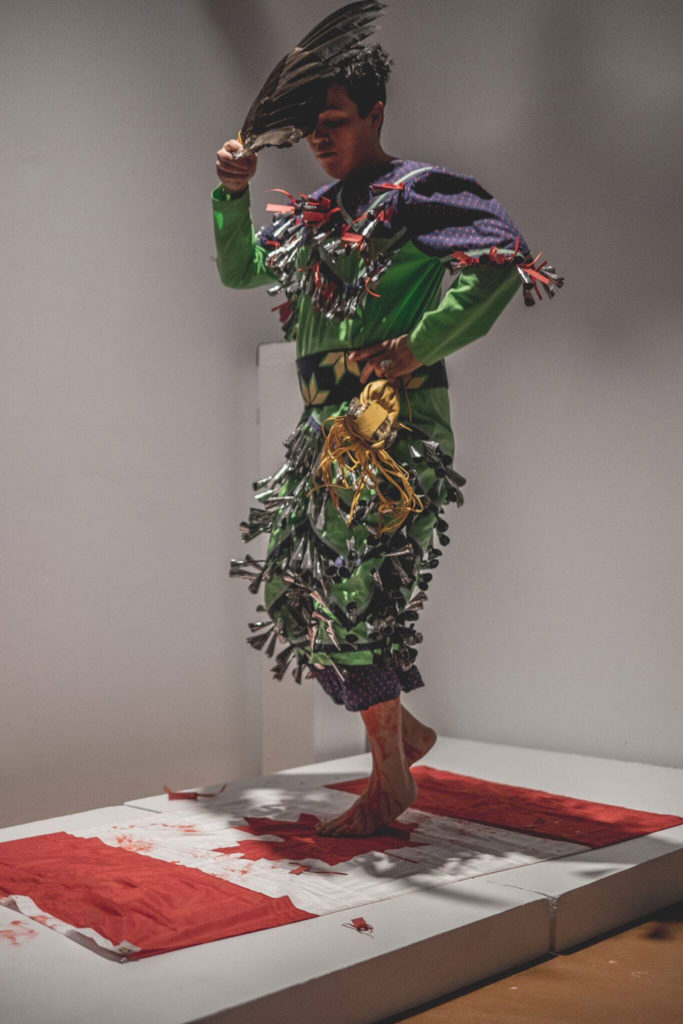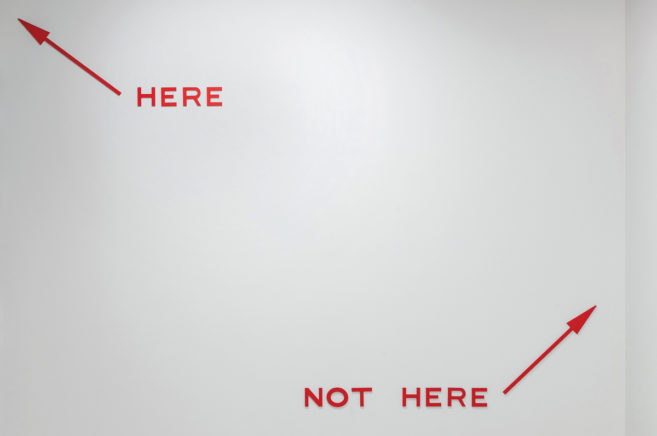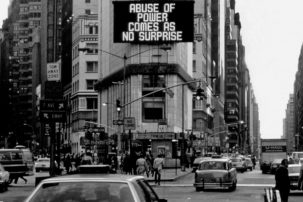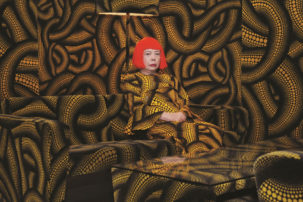My mother, a beautiful Anishinaabe woman from Manitoba, taught me how to paint when I was five years old. She was kind and patient and once in a while would even let me paint at her desk. Those moments were the safest I ever felt with her. When she sat down to make something, I knew she would be in a good mood for at least a couple of hours. I knew she wouldn’t be thinking about how to feed me and my brother our next meal, how much laundry needed to be done, what bills needed to be paid or whether or not my father would show up for his bi-weekly visit.
I remember the specific way she laid out her art supplies—paints lined up from darkest to lightest, brushes drying tips-up in a soup can, a T-square aligned with the metal edge of her homemade drafting table and a few second-hand books about colour, design and architecture. I thought my mom was the smartest, coolest and best artist in the whole wide world. I thought I was living with someone famous, like she should be on TV or something. When I would watch my mom paint, I would sit as still as a deer in headlights. My eyes were wide open, my ears cocked; I could hear the sound of every brushstroke and every time she’d hold her breath to make a straight line. I knew when I grew up, I wanted to be just like her.
I don’t remember people asking me what I wanted to be when I got older. At least not at the age where I’d be old enough to truly grasp the question. Nor did anyone ask me what I was going to do after high school; instead they questioned if I’d even achieve my grade 12. It wasn’t until I was much older that I realized I could earn money through art. When I finally stated that I wanted to be an artist, people would always discourage me with the adage “every artist is a starving artist.” I always wondered why someone would want to do something that would cause them to suffer. Now, I know why. I’ve learned that you don’t have to suffer for the things you love; it’s about reassessing what matters to you, what you want to prioritize and what you’re willing to let go of.
I never thought about how much money artists made, but I knew that making art made my mother’s tears go away. I knew art was something priceless. I learned that we had access to happiness and didn’t have to pay for it. I knew that whatever she made, it made our apartment beautiful. Even the way she’d hang her work in the hallway made me feel rich. I felt like when my friends came over they’d think we were rolling in it, even though the work was mostly hung with thumbtacks and rolled tape.
In the very back of her supply shelf, there was a bottle that stood out—it was taller than the others and had the most beautiful printed-paper label. The bottle was labelled “Indian ink” and I thought for sure it had to have been made in Manitoba. I thought “Indian ink” was only used by Indians. I used to think that when I used it, I made art that held some kind of ancestral magic. Like it didn’t matter what I created with it; it would turn out to be beautiful and truthful. As if art could lie.
When my mom painted, she would set out paper for me and would give me a few of her brushes, but not the “good ones”—those were reserved for special days. She used them infrequently, and cherished whatever was made with them. I was convinced they were made with the softest, whitest unicorn hair. I used to believe that when I grew up, my mom would eventually let me use the unicorn brushes, once I could prove to her I was good enough. It was only then that I would make art that would sing and dance right off the canvas. She used to keep these special brushes separate from all the rest and cleaned them with the same care and gentleness that she used when she washed my hair. I knew that when those brushes came out, my mom meant business, and whatever she was about to make would be breathtaking.
On the weekends when my mother wasn’t working, she would take us for drives in the country. She’d pack a few sandwiches, fill up the Thermos and we’d be off. While exploring the back roads of Caledon and going off the beaten trails in Algonquin Park, my mom would gather materials that she thought were interesting to paint on or make something out of. In this, she taught me that the earth provides materials for us to make beautiful things. I began to understand at a very young age how much we depend on the land, how we must protect it so it can continue to care for us. And I understood that the earth made its own art, and that adults have names for the work, such as sunsets, northern lights, moss, rivers and rain.
My mother taught me to always source and gather different materials to make art with. She would always experiment and never settle on one medium. In my eyes, my mother was art—the absolutely longest duration performance, she would fill any room she entered. She was light, contrast, shape and depth, and held stories that would baffle even the best curatorial writers and academics. Her skin glowed golden-brown and her hands transformed and became a duplicate of every tool ever made; she made everything we couldn’t afford. Her passion to create was inspiring. She carefully balanced life and her children and made time when she could to take part-time night courses that helped her escape the fists of my father.
My mother would sit me down and explain her brushes, and the choice of paint or clay she was using, and she was the first to inspire me to fall in love with drafting, typography and architecture. My mother taught me everything I know about art. She was my school. She gave me my degree and my IMFA—my very own Indigenous Master’s of Fine Art. She has been my professor, mentor and guidance counsellor longer than any extended-studies or PhD program. My mother is the one and only reason why I have this opportunity to write for Canadian Art. Through theory, practice and creation, she taught me everything I’ve ever needed to make it in the art world through the first 10 years of my life. My mother taught me to create from the deepest parts within. The parts that make me burn with passion and determination to express an idea or feeling onto materials. Art institutions in North America would never accept my mother’s qualifications as sufficient for instructing other aspiring art students; she doesn’t have her grade 12, let alone the degree they require. But unlike many professors at these institutions, my mother has qualifications from her life and practice that aren’t reducible to slips of paper, and that have made her into one of the best teachers I have ever had or could wish for.
The last time I was asked to speak at an Art and Activism class at NSCAD University, I was reminded about how consumed people get by colonial, state-sanctioned institutions. Information is being fed to privileged, eager students based on power and misrepresentation of our history as classes reinforce narratives of European artists as “artistic masters.” One of the problems surrounding decolonization of academic institutions is that Indigenous-based courses aren’t mandatory, whereas courses such as Euro-centric 19th-century art history are. When institutions do talk about Indigenous art, it’s primitive, basic and regressed. It is caught in a time lapse of ancient tools, materials, museum displays and the voices of non-Indigenous curators and academics.
Like my mother, I don’t have state-sanctioned academic creditability, except for my grade 12. A few years ago, I stopped embellishing the education section of my CV and I corrected it to three lines. The first line indicates my high-school diploma, the second, the three years I spent in language school learning my Indigenous tongue and the third, at the top of the list, reads “Traditional Anishinaabe Pedagogy and Intelligence taught by my mother.” I spell out and bold her name as proudly and just as prominently as the two other schools I attended.
In 2016, I was nominated for the Sobey Art Award for my media and performance piece It’s Not Your Fault. I never considered that someone would believe in me enough to think that I deserved such a nomination. I was nominated by a professor at NSCAD and a woman I had worked with at an artist-run centre who supplied all of the documentation for the submission of the nomination. Months passed, and I never heard anything from the organizers. I chalked it up to surpassing the age cut-off (40), as I turned 41 a few weeks after the deadline. Even though, through the nomination process, my nominees spoke directly to my age and requested that I still be considered for the longlist, I never heard from them.
I was almost there, I almost made it. My art career was delayed through schooling and raising three children. I struggle with the Sobey Art Award and all of the other art awards with age-specific guidelines that limit many Indigenous artists, especially those who were or are young mothers, from being recognized for their work, their contributions to the discourse and for their efforts in the industry. I know not everyone reaches these career markers at the same time, so who are these awards really suited for? The few that managed to squeeze through the cracks? What about those who have never been to art school? So many awards have age limits attached to them, but as we know, not all people have access to education—especially with the systemic barriers faced by those who are black, Indigenous or from many other marginalized communities.
I am proud to say I have earned the most prestigious award in my art career to date: the respect of my children, my peers and my friends, all thanks to my mother’s pedagogy, her father’s pedagogy and my grandfather’s pedagogy. Indigenous knowledge transfer has continued my whole life through my experiences with elders, teachers and other individuals in my community. I’ve learned to honour and respect Indigenous knowledge on my own terms and decolonize how I think about academia, the value of the academic industrial complex and the refusal of this legitimacy within the colonizer’s education system.
I’m currently researching my next body of work, The De-Celebration of Canada 150. I spend day after day in archives, in libraries and on archived websites. I’m researching different mediums, planning and conceptualizing ideas, thoughts and feelings. I’m meeting with galleries, talking about my work, trying to tap into the media and hoping they will buy into my concepts. I’m doing everything my mother taught me to do. To make art that aligns with the fire within me. To be creative, choose materials wisely, consider different sources of information and never stop learning. She taught me to create art because I need to make it whether or not anyone else likes it, buys it or appreciates it.
I also dream about building an arts community that focuses on the passion, love and life experience of black and Indigenous people. I want this centre to build a community that offers unparalleled education based on Indigenous knowledge-keepers in our communities. The ones who have studied materials, the land, history, culture, dance and storytelling through their parents, grandparents and great-grandparents. And finally, I hope to see art, craft and performance accreditation that is evaluated and granted by elders and community members that rank at the same level as, if not higher than, the typical post-secondary institutions that focus more on international-student requirement and less on retaining black and Indigenous students: the most vulnerable, the least represented and the most likely not to complete their studies.
As a child, I never fully understood the value of art in our society; how it heals, teaches, inspires, builds communities and leaves legacies. What I do know is that, through making art, I have access to happiness. I don’t need school to be part of the colonial canon. This year I turn 42. And I’m just getting started.
Raven Davis is an Indigenous, mixed-race, 2-Spirit multidisciplinary artist and activist from the Anishinaabe (Ojibway) Nation in Manitoba. Davis’s work blends narratives of colonization, race, 2-Spirit identity and Anishinaabek language and culture.









